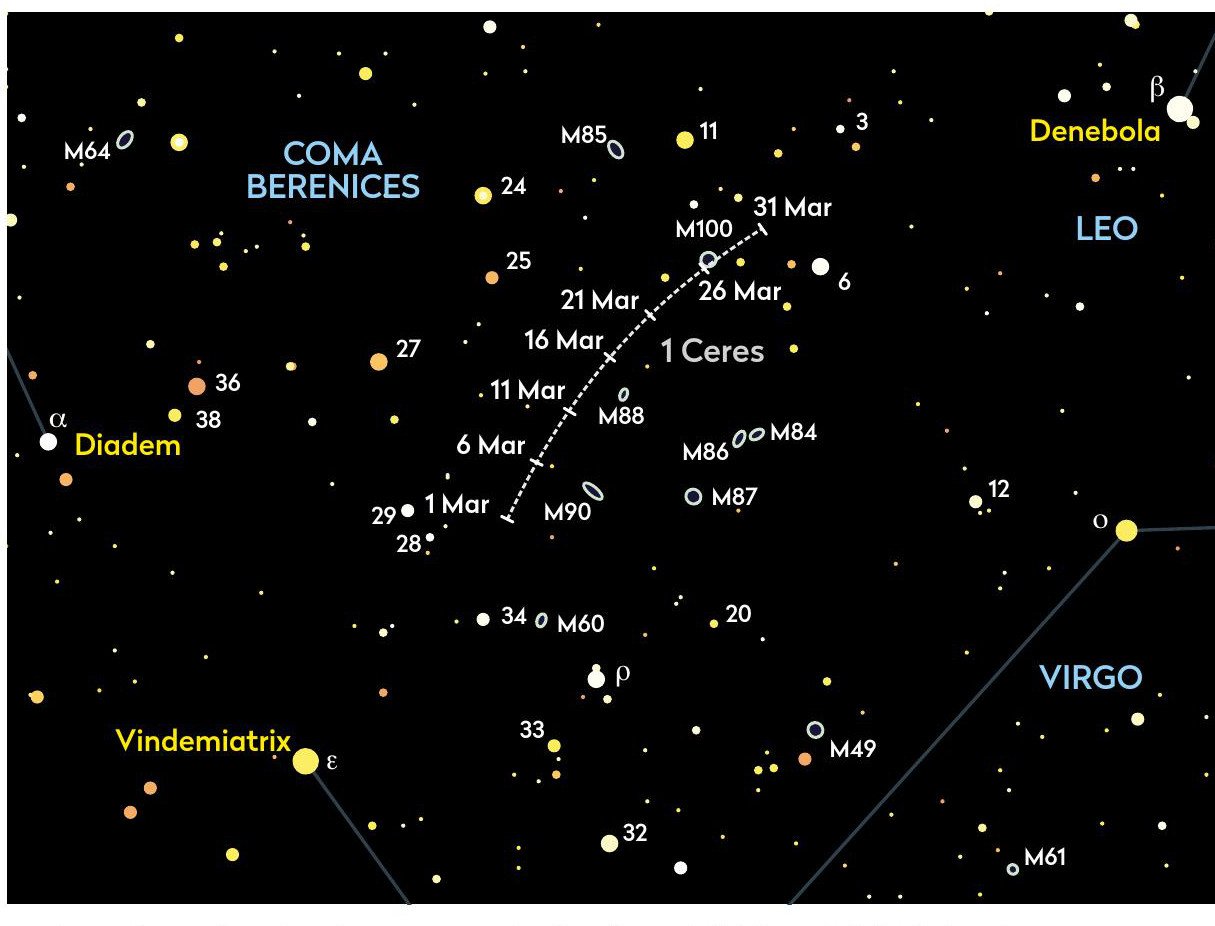Passing north of the Virgo Cluster, dwarf planet Ceres is trackable all month

Dwarf planet Ceres reaches opposition on 23 March. Currently moving through southern Coma Berenices, Ceres will appear like a seventh-magnitude star throughout March, making it easy to track using binoculars or a small telescope. On 1 March it shines at mag. +7.3, reaching its peak brightness of +7.1 between 14 and 29 March. Close to the border between Coma Berenices and Virgo, this is galaxy territory, the dwarf planet tracking along the northern edge of the Virgo Cluster. At 00:00 UT on 16 March, Ceres lies 40 arcminutes north of the mag. +9.4 galaxy M88.
Later, at 01:00 BST (00:00 UT) on 27 March, it passes across the similarly bright mag. +9.3 galaxy M100 – although instruments that only show the core of this beautiful spiral will more likely show Ceres making a close approach rather than transiting the faint spiral arms. A good technique to record Ceres is to make a drawing or take a photo of the suspected field over several nights. Weather permitting, this should reveal Ceres’s movement as it tracks against the background stars.
Ceres was the first identified asteroid. Discovered on 1 January 1801 by Italian monk Giuseppe Piazzi, as the first asteroid it was designated to become 1 Ceres. In modern times, although it is still referred to in this way, it has been reclassified as a dwarf planet. Piazzi discovered Ceres by noting the existence of an additional, uncharted star. Observing over consecutive nights, the ‘star’ appeared to move, raising suspicions that it was something non-stellar. Illness and bad weather got in the way of further observations until 24 January 1801, when the motion of this mysterious object was sufficient for Piazzi to determine that it was located within the Solar System.